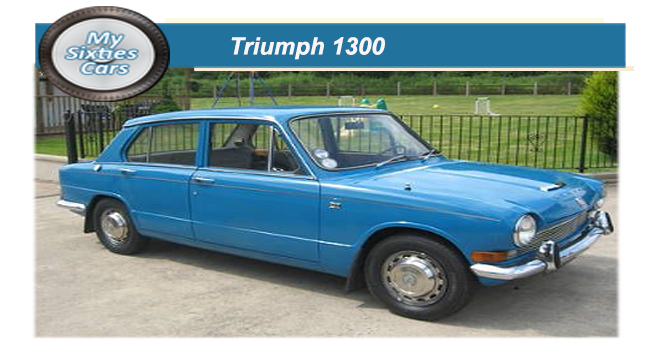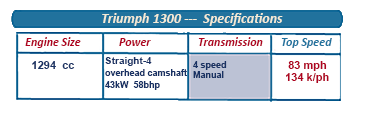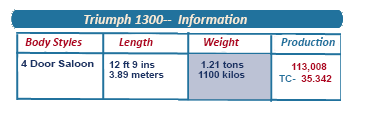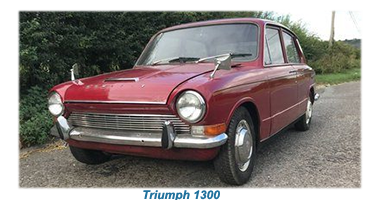
With sales of the Herald showing the first signs of flagging coming into the mid- Sixties, Triumph began to set the wheels in motion that would eventually lead to the top-selling mid-range family saloon being superseded- although not without a struggle.
 mately the Herald’s so-called successor, the 1300, went into production alongside the car it was meant to supersede, while the original version was dropped a year before the Herald.
mately the Herald’s so-called successor, the 1300, went into production alongside the car it was meant to supersede, while the original version was dropped a year before the Herald.
 hThe reason for the haste to send the Herald into premature retirement was the success that front-wheel drive cars such as the Mini and 1100, were enjoying in the early Sixties.
hThe reason for the haste to send the Herald into premature retirement was the success that front-wheel drive cars such as the Mini and 1100, were enjoying in the early Sixties.
Keen to get a part of the action, Triumph started developing the 1300, based around the company's already active front-wheel drive 'Ajax' project.
In tis format, the Herald’s gearbox was situated behind the engine, allowing for the incorporation of four-wheel drive in the future.
Power for the 1300 was supplied by an adapted Herald engine, bored out to 1296c, matched up to a four-speed all-synchro-mesh gearbox, mounted below the typical clutch/flywheel assembly of the longitudinally mounted engine.
![]()
 As far as body design was concerned, the 1300 was based very closely on the 2000 saloon, with Italian ace auto designer Giovanni Michelotti having succeeded in shrinking the 1300’s body to suit a wheelbase that was nine inches shorter.
As far as body design was concerned, the 1300 was based very closely on the 2000 saloon, with Italian ace auto designer Giovanni Michelotti having succeeded in shrinking the 1300’s body to suit a wheelbase that was nine inches shorter.
 In true 2000 fashion, the interior was plush and comfortable; equipment included very deep front seats tilting to give instant height and rake adjustment, while the steering wheel position was also adjustable.
In true 2000 fashion, the interior was plush and comfortable; equipment included very deep front seats tilting to give instant height and rake adjustment, while the steering wheel position was also adjustable.
The 1300’s wheelbase was kept as long as possible to provide maximum space inside, and the passenger compartment was only about 1+ inches shorter than that of the 2000.
The front-wheel-drive 1300 was impressively well finished, and fairly quiet, although gear lever movement was considerable. There was a fair amount of roll, but the ride was good, and the car was very stable.
![]()
The ![]() The new engine pushed it along at 83 mph, from 0-50 mph in just over 13 sec and with an overall fuel consumption of about 26 mpg — well down on its more modestly engineered competitors.
The new engine pushed it along at 83 mph, from 0-50 mph in just over 13 sec and with an overall fuel consumption of about 26 mpg — well down on its more modestly engineered competitors.
 With sales for the 1300 moving along steadily, Triumph took the logical step to produce a high-performance version of the 1300, the 1300 TC.
With sales for the 1300 moving along steadily, Triumph took the logical step to produce a high-performance version of the 1300, the 1300 TC.
An infinitely more robust vehicle than the standard 1300, the TC had a top speed that touched 90 mph while fuel consumption was improved, averaging around 30 mpg ( 12k/pl)





